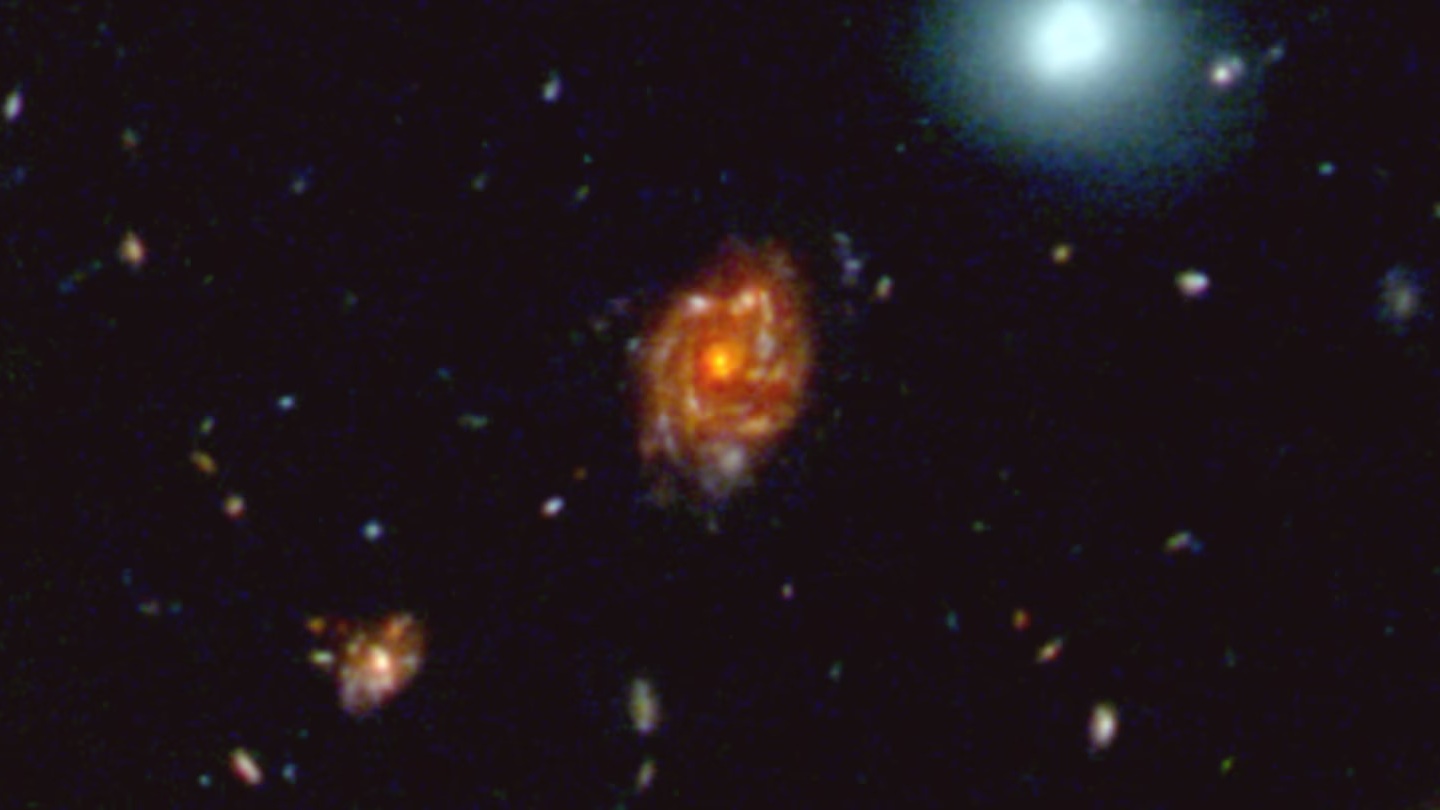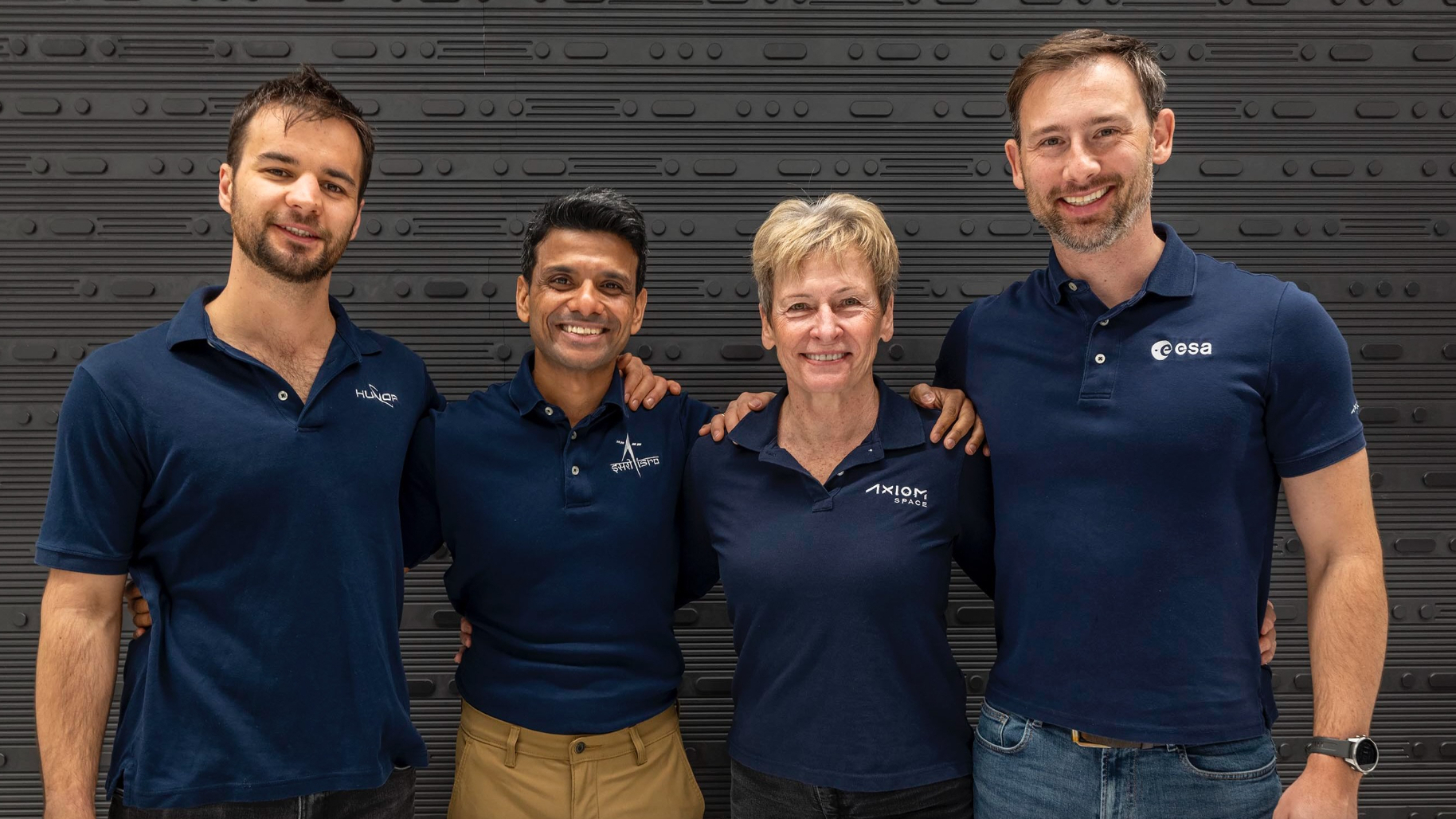JWST finds spiral galaxy about 5 times more massive than Milky Way — scientists call it 'Big Wheel'
It existed just 2 billion years after the Big Bang.

A team of astronomers at the University of Milano-Bicocca has uncovered a colossal spiral galaxy that existed just 2 billion years after the Big Bang, which gave birth to the universe some 13.8 billion years ago. Nicknamed "Big Wheel," it is in fact one of the largest galaxies ever observed from this early cosmic era.
The scientists found Big Wheel near a quasar, which is a powerful and active supermassive black hole, using the James Webb Space Telescope (JWST). The galaxy lies 11.7 billion light-years away from our corner of the cosmos, and its given nickname comes from its remarkably fast rotation and huge size. It's five times more massive than the Milky Way, for context, stretches across 100,000 light-years.
More specifically, the astronomers used new spectroscopic observations with the JWST's Near-Infrared Spectrograph (NIRSpec) to confirm that Big Wheel is a rotating disk. The galaxy's rotation curve, an important characteristic of spiral galaxies, shows a pattern typical of flat rotation curves seen in mature galaxies. The velocity of the galaxy's rotation increases as you move outward from the center, reaching a maximum rotational velocity of several hundred miles per second, which is also similar to much more developed galaxies.
Big Wheel's rotational velocity also aligns with the local Tully-Fisher relationship, a correlation between the size and rotation speed of galaxies observed today. What this all means it that, despite its youth, the galaxy behaves in a manner consistent with some of the largest, most mature spiral galaxies we see in the present universe. Big Wheel exists during a time when most galaxies are expected to be small and in their earliest stages of development. Yet, it's fully formed.
"This galaxy is spectacular for being among the largest spiral galaxies ever found, which is unprecedented for this early era of the universe," Charles Steidel, the study's lead author and an astronomy professor at Caltech, in a statement.
So, how could this happen?
One potential clue lies in Big Wheel's environment. The galaxy resides in a dense region of space where galaxy number densities are more than ten times higher than the cosmic average. This dense environment could provide the perfect conditions for rapid galaxy growth. Sebastiano Cantalupo, co-author of the study, suggests Big Wheel may have benefited from efficient gas accretion, which carried the coherent angular momentum necessary for the formation of large disks. Additionally, the frequent mergers of gas-rich galaxies in this crowded region may have contributed to its massive size and rapid growth.
Breaking space news, the latest updates on rocket launches, skywatching events and more!
"We think this may open the door to understanding how some galaxies were able to bypass the usual slow process of star formation and grow to enormous sizes in the early universe," Cantalupo said in the statement.
The discovery suggests that galaxy formation might not be as slow or gradual as previously thought, especially in environments rich in gas and merging galaxies.
Big Wheel challenges current cosmological models. Its size and mass far exceed predictions for galaxies at similar redshifts, making it an outlier in the galaxy population. Down the line, astronomers may need to adjust their models to account for the possibility of rapid galaxy growth under such dense conditions.
The study was published on March 17 in the journal Nature Astronomy.
Join our Space Forums to keep talking space on the latest missions, night sky and more! And if you have a news tip, correction or comment, let us know at: community@space.com.
Larissa G. Capella is a Brazilian science writer based in the U.S. with a broad passion for the sciences, including physics, astronomy, geoscience, neuroscience, and more. She earned both a B.S. in Physics and a B.A. in English from Western Washington University in 2024. During her time there, she conducted astrophysics research while also immersing herself in various writing projects. It was through this blend of science and writing that she discovered her passion for combining the two. Larissa is dedicated to making science both accessible and inspiring, with the aim of sparking curiosity and wonder in future generations. In her free time, she enjoys reading, learning new things, and exploring different languages. You can find her on Twitter: @CapellaLarissa where she'll share any new stories she writes.
You must confirm your public display name before commenting
Please logout and then login again, you will then be prompted to enter your display name.
